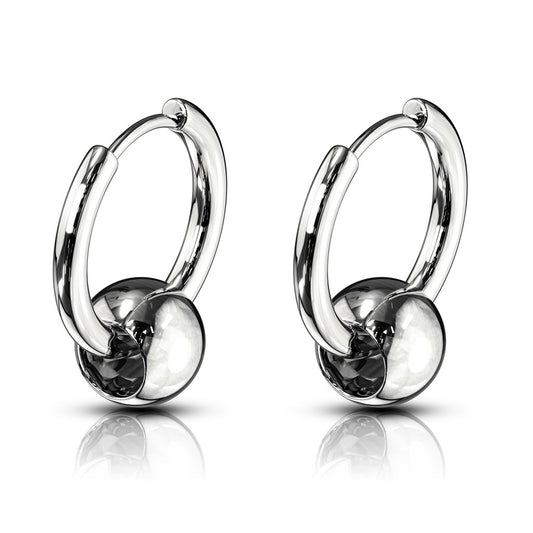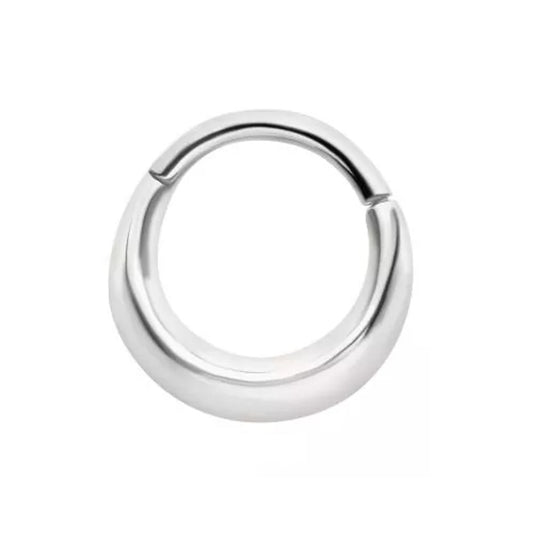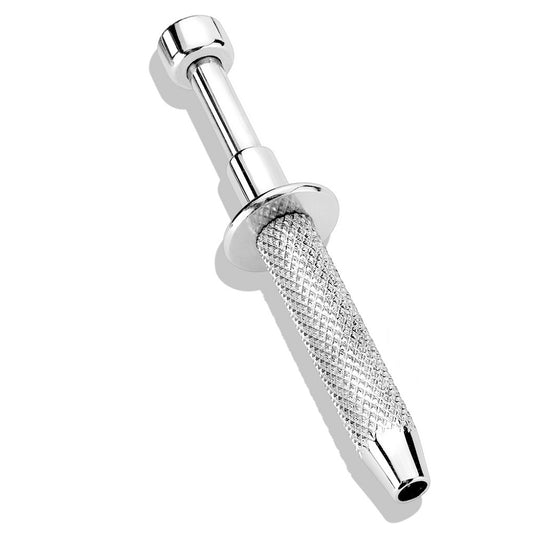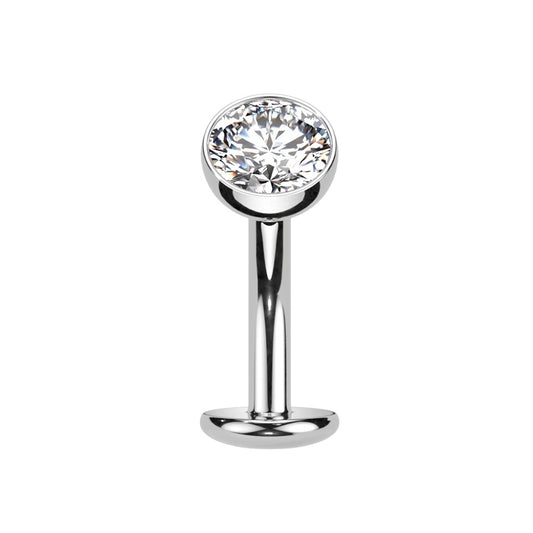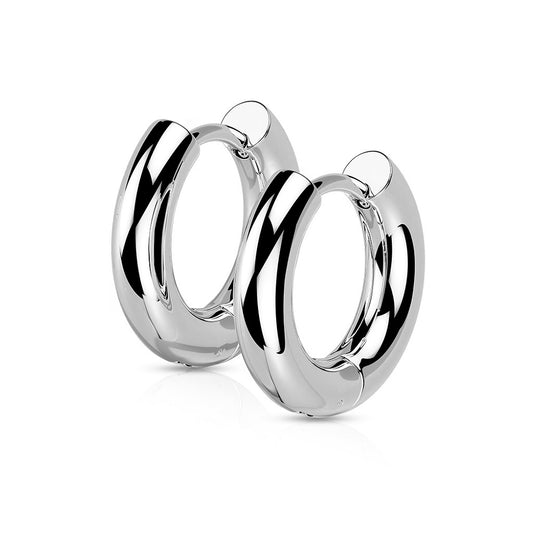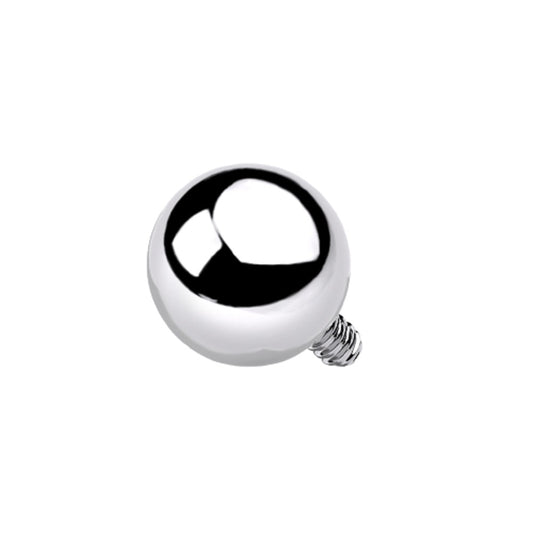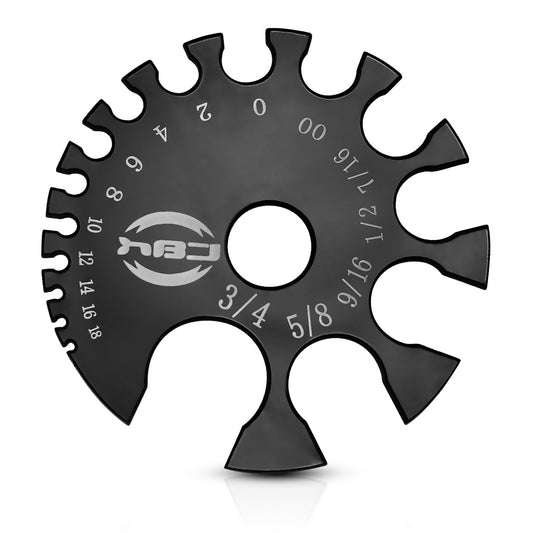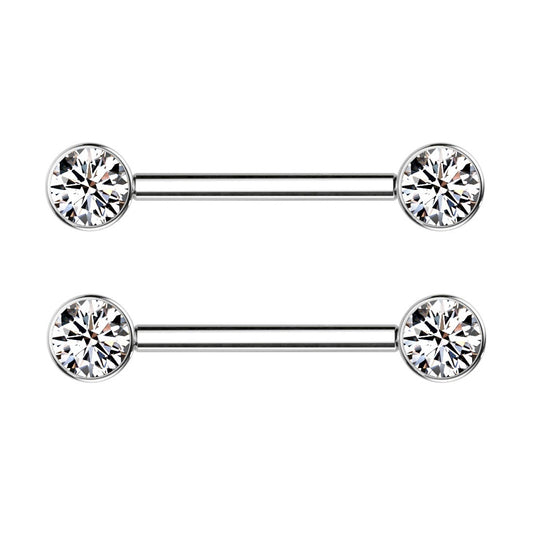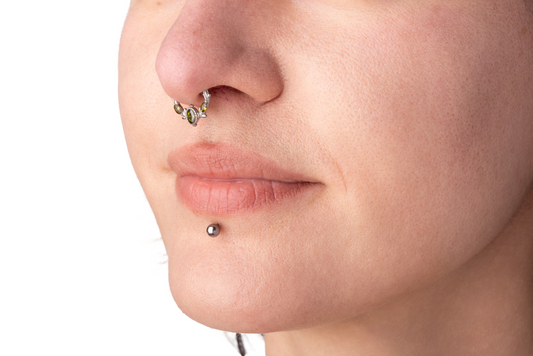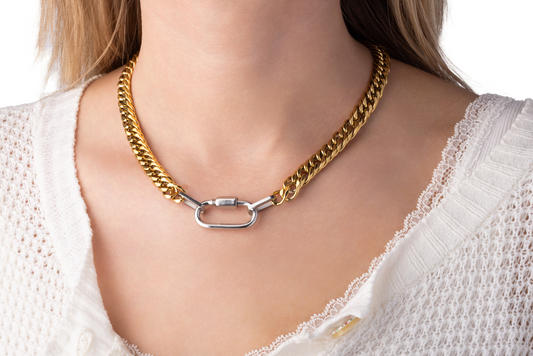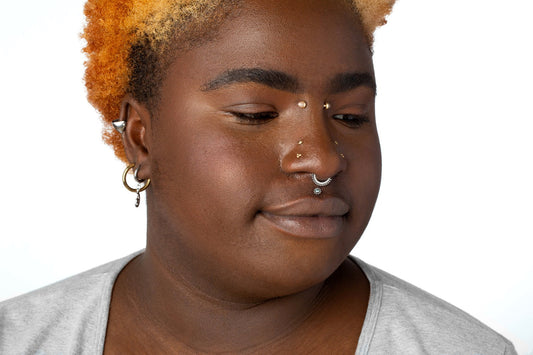Soooo... you just got pierced???
No matter where your newest piercing is– piercers recommend a standard regimen for all post-piercing aftercare. While the specifics may vary depending on the region of your newest piercing, keeping it clean and simply not touching it are of utmost importance! Typically, your piercer will provide you with aftercare instructions- however, these tips can be a reliable guide in case you’ve forgotten!
Body Piercing Cleaning Instructions:- Before cleaning or touching your piercings, wash your hands.- Sterile saline is a gentle option to clean your piercings.- Once cleaned, rinse all remaining residue around your piercing with water.- After cleaning, pat dry with a disposable paper towel. Cloth towels should be avoided because they can develop bacteria or catch on your jewelry. |

What's Normal?
The initial healing process may be met with redness, swelling, bleeding, tenderness, and even bruising. All of which is normal! Following this stage, your piercing may be itchy or even develop a crust. It is important to not pick at it!
Depending on where your piercing is located, the healing process may feel complete in a week– or feel like it's taking months. Nonetheless, it is crucial to maintain your aftercare routine for the entirety of the healing period outlined by your piercer!

Additional Tips!
- Leave your jewelry in place for the entirety of the healing period. Avoid touching or moving your piercing unnecessarily.
- If saline solution was not provided by your piercer, it can be purchased at a local pharmacy. In a pinch, it can be made at home using distilled water and sea salt.
- Some piercings require additional cleaning during the healing process. If using soap to clean, unscented gentle soap is ideal. Oral piercings may be cleaned with an alcohol-free mouth rinse.
- Hydrogen peroxide or rubbing alcohol should never be used on a fresh piercing! They can irritate your skin and prolong the healing process.
- Following the initial healing period, a jewelry downsize may be necessary. Longer bars are typically used initially to allow for the wound to swell– however, as the piercing heals, a longer bar can cause harm to your body. Your professional piercer should outline if and when a downsize is necessary.
- Even after your piercing has healed, do not remove jewelry. Healed piercings are known to close within minutes.
- Healed piercings may require regular cleaning to maintain hygiene! (beware the septum funk!)

If you think that your piercing may be infected or you even notice something out of the ordinary– contact your piercer or a healthcare provider!


